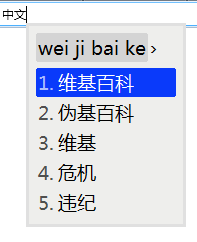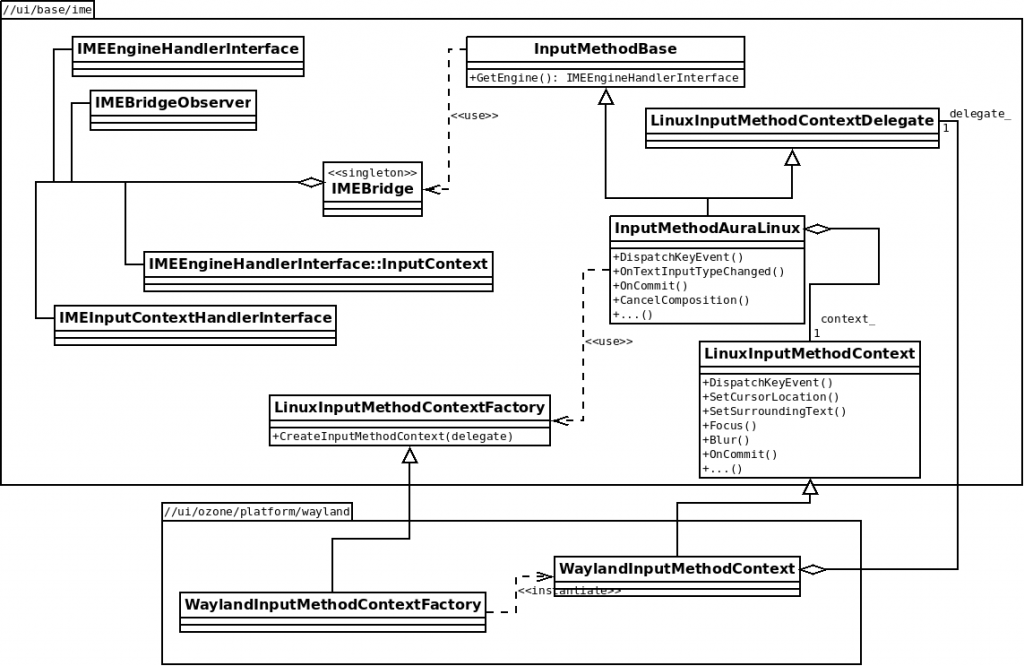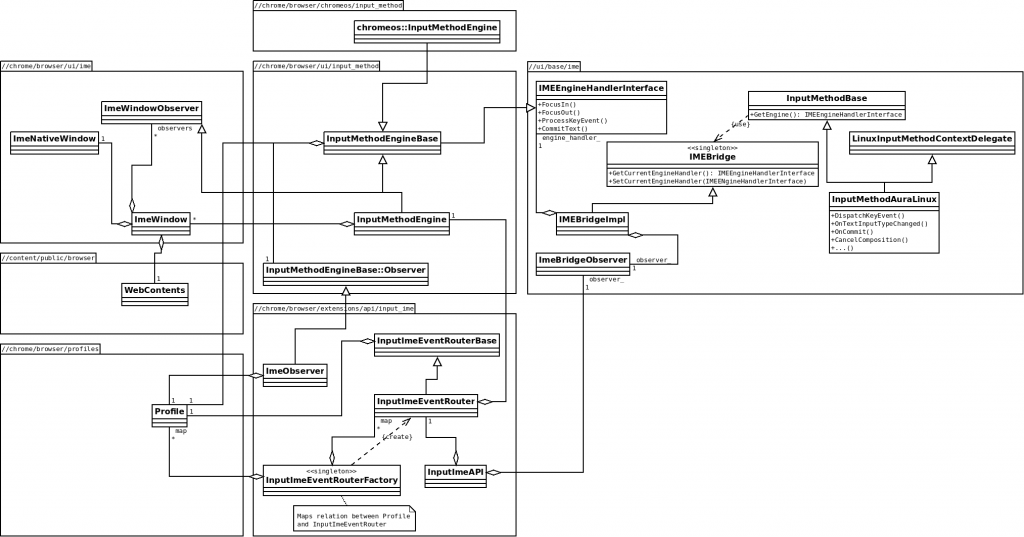This is an overview of the different input method implementations in Chromium, centered in Linux platforms.

By Rime-devel – 小狼毫输入法界面 / Interface of Weasel Input Method, GPL, Link
Native IME
InputMethodAuraLinux is the central piece here. It implements two important interfaces and triggers the construction of the platform-specific bits. This is the structure for the Wayland/Ozone backend:
The InputMethodAuraLinux triggers the construction of a specific LinuxInputMethodContext through the Factory. In the case above, it would be an instance of WaylandInputMethodContext. It will save a reference to the Context while, at the same time, set itself as the delegate for that Context object. The set of methods of both classes is pretty similar, because they are expected to work together: the Context object, in the parts related to the platform, and InputMethodAuraLinux in the parts related to the rest of Chromium. It will interact with other system classes, mainly through the singleton object IMEBridge.
The X11 backend currently involves slightly different classes. It still has the InputMethodAuraLinux as a center piece, but uses different implementations for the Context and the ContextFactory: the multi-purpose class LinuxUI also acts as a factory. It’s expected to adapt to the Ozone structure at some point in the future.
ChromeOS and IME extension API
Chromium provides an extension API to allow the implementation of IMEs exclusively with web technologies. It shares code with the ChromeOS implementation.
The piece glueing the native infrastructure and the ChromeOS/Extension API implementations is the IMEEngineHandlerInterface, which has hooks to manage relevant events like focus in or out, process key events, etc. The singleton class IMEBridge can set an EngineHandler, which is an implementation of the aforementioned interface, and in the case that such implementation exists, it will receive those events from Chromium whenever they happen.
There is one base implementation of IMEEngineHandlerInterface called InputMethodEngineBase. It is extended by chromeos::InputMethodEngine, for the ChromeOS implementation, and by input_method::InputMethodEngine, for the IME extension API implementation.
The setup of the IME extension API contains the following pieces:
- observers to the IME bridge
- an InputIMEEventRouter that contains an instance of the InputMethodEngine class
- a factory to associate instances of InputIMEEventRouter with browser profiles.
- An InputImeAPI class that acts as several kinds of observers.
- the actual code that backs every JavaScript IME operation, which makes use of the classes mentioned above and is contained in individual classes that implement UIThreadExtensionFunction for every operation.
The IME API operates in two directions: when one of the Javascript operations is directly called, it will trigger the native code associated to it, which would invoke any relevant Chromium code; when a relevant event happens in the system, the IMEBridgeObserver is notified and the associated JavaScript callback will be triggered.



